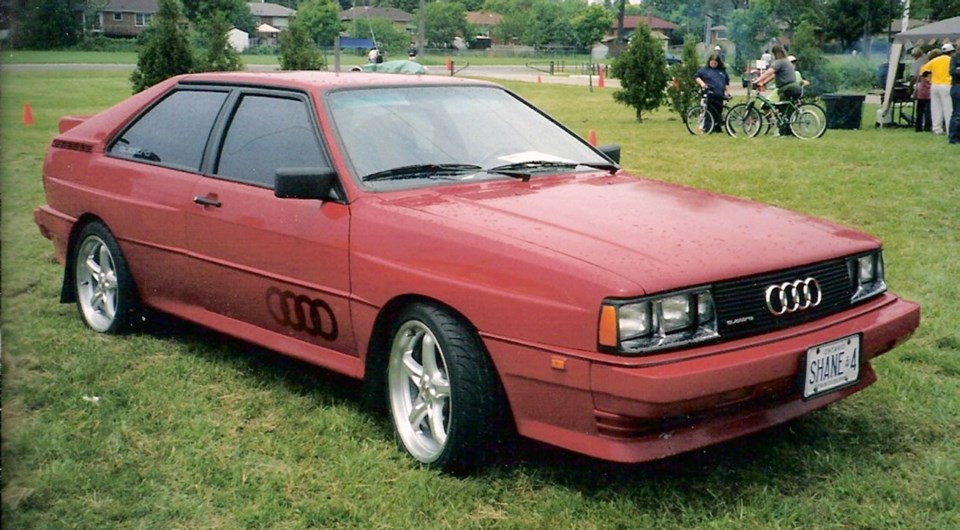Although four-wheel drive was popularized by the explosive sales of sport utility vehicles, its passenger-car use was limited until more recently.
In the 1970s and ’80s, as 4WD cars such as the Japanese Subaru and AMC Eagle became available, drivers gradually learned about and appreciated the extra traction and security in low-traction conditions. But while Eagles and Subarus enjoyed some popularity, especially in mountainous areas, 4WD cars were still a limited offering.
The rising popularity of SUVs increased 4WD awareness and convinced more motorists they needed it. There was also the very practical reason that transmitting the increasing power of cars through two wheels, particularly front ones, was becoming more problematic.
Meanwhile, in the early 1970s, Audi development engineers had been testing the Volkswagen Iltis 4WD Jeep-type military vehicle in Scandinavia. They marvelled at how the little, low-powered Iltis outperformed large, powerful, two while-drive cars on snow and ice (Iltises were later assembled by Bombardier for the Canadian Armed Forces).
Speculating that 4WD might have a future in their cars, the engineers approached the idea of a high-performance 4WD car with Audi’s development chief Ferdinand Piech, grandson of Volkswagen creator Ferdinand Porsche.
Piech immediately recognized it as a way to enhance Audi’s technical leadership, and sought approval for 4WD development from Audi’s parent company, Volkswagen. VW management sanctioned it, provided the 4WD car used as many Audi parts as possible and was compatible with Volkswagen-Audi’s manufacturing plans.
Engineers began prototype-building, using a front-wheel drive Audi 4000 fitted with a new 2.2-litre, overhead-cam, inline five-cylinder engine then under development by Audi. It was positioned longitudinally ahead of the front axle, followed by the differential and transmission, a favourable layout for 4WD application.
A concentric shaft-within-a-shaft, called a quill shaft, carried power forward from a centre differential, keeping the driveline low enough to ensure the car’s profile was similar to a regular front- or rear-driver.
To obtain rear drive, the regular beam axle was replaced with the Audi 4000’s front MacPherson struts rotated 180 degrees. An Iltis differential with an aluminum case was used and the halfshafts were the same as the front. A five-speed modified Audi 5000 manual transmission was fitted.
The driveline was tried without a central differential, but due to binding in corners, an Audi 50/VW Fox differential was installed behind the transaxle. All wheels were driven all the time.
For really slippery going, the intermediate and rear differentials could be locked. The front differential remained open because locking it would interfere with steering. A lighted diagram on the instrument panel showed when the differentials were locked.
The production Audi inline five-cylinder engine was turbocharged and intercooled. With higher boost, a more aggressive cam and other modifications, it was increased from the regular 5000 Turbo’s 130 horsepower to a reliable 200, although it was detuned to 160 for North America.
The first Quattro prototype was ready by March 1977, and after more development and considerable winter testing on steep European mountain passes, production began in the fall of 1980. The Audi Quattro was based on the Audi four-passenger coupe, fitted with larger spoilers, and fender flares to accommodate higher speeds and bigger tires.
When the Quattro was introduced at the 1980 Geneva Motor Show as a 1981 model, it was a sensation — the first four-wheel-drive high-performance car since the Jensen Interceptor FF of the early 1970s. It came with performance credentials, as it had already been rallied with outstanding results.
Prior to introduction, Quattros finished first, second and fourth in the 1980 Paris-to-Dakar rally. In 1981, Quattros won the British, Swedish and San Remo rallies, and in 1982 took the manufacturers’ World Rally Championship. They collected several other rally victories, including Pikes Peak in Colorado.
When the Quattro reached North America in 1982, it again demonstrated its outstanding performance. Road & Track posted a fast (for that time) zero-to-100 km/h time of 8.2 seconds, and top speed of 206 km/h.
The original Audi Quattro was made until 1991, with more than 11,000 built. Its reputation was so strong that it prompted Audi to vigorously promote Quattro 4WD for its regular sedans and wagons, causing Audi to become closely associated with 4WD.
The Quattro system also became dominant in racing, as well as rallying, so much so that in 1992, Germany’s Supreme National Motor Sport Authority banned Audi Quattros from touring car championship events. And, in 1997, the Quattro was disallowed from the Central European Touring Car Championship. This ended Audi’s factory-sponsored racers.
Other manufacturers followed the all-wheel-drive path, and 4WD cars continue to gain popularity, a movement for which the original Audi Quattro deserves a good deal of credit.



